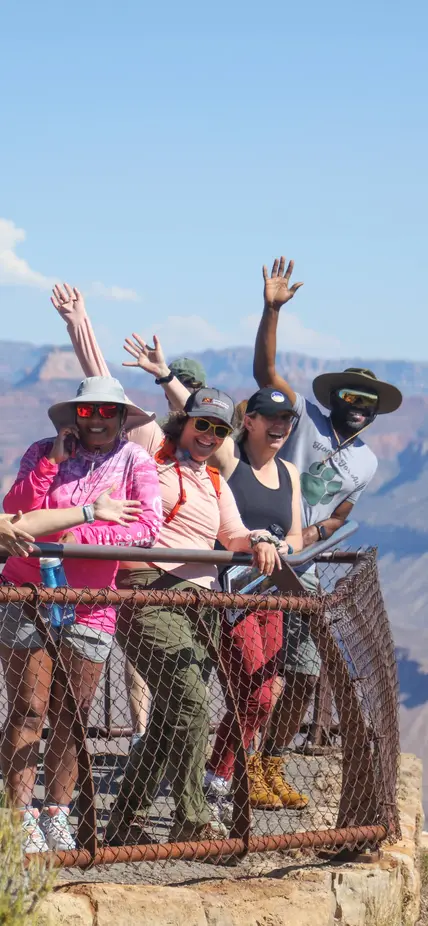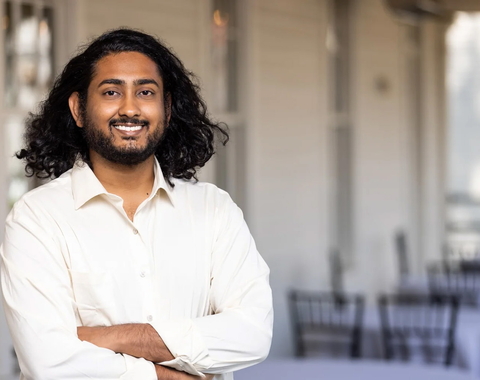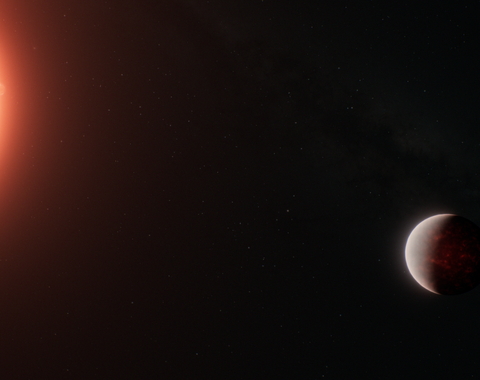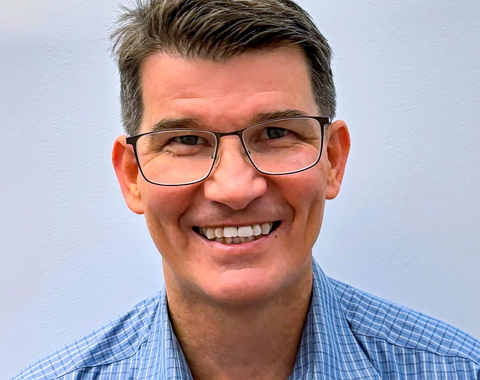We’ve come a long way since plate tectonics, but geoscience courses across America leave a lot of modern science out of the discussion.
During the last week of June, Carnegie Staff Scientist Lara Wagner, along with her collaborators Christy Till from Arizona State University and Brian Horton from the University of Texas - Austin, will take six middle and high school teachers into the field to get hands-on experience in geoscience. This effort is part of the NSF-funded MUSICA project, with the goal to jumpstart middle and high school geoscience curriculums with boots-on-the-ground training that coincides with active research.
With curriculum guidance from Carnegie Academy for Science Education’s (CASE) Acting Director Marlena Jones, the teachers participated in a geoscience crash course for the first part of 2022—complete with homework. Now, they are ready to fly to Arizona for a week-long workshop.
Wagner stated, “We’re hoping to give teachers a look at how modern earth scientists do their research, from finding samples in the field to interpreting the results obtained in the lab.”
During the workshop, they will work alongside MUSICA scientists to learn firsthand how to conduct research from geological fieldwork through laboratory analysis and scientific interpretation. The educators will then work with scientists to compare and contrast Earth processes responsible for the Rocky Mountains in the United States with similar processes occurring today at an active plate boundary zone in Colombia, South America—where the scientific part of the MUSICA project will take place.
The teachers will use what they learn during the workshop to create a series of bi-lingual and standards-aligned lesson plans related to the MUSICA project during the subsequent school year with support from the MUSICA team. Teachers will apply the lessons they create in their classrooms and present the lessons and the results of classroom implementation at a national or regional geoscience convention.
Meet the teachers
Ms. Stephanie Anderson
Ms. Stephanie Anderson has a B.S. in Geology from Arizona State University and completed the Secondary Education Program through Rio Salado College to earn her teaching certificate.
She currently teaches General Science to 7th and 8th-grade students at Pathfinder Academy in Mesa, AZ. She has been a teacher for 10 years at several charter schools in the Phoenix metropolitan area. Stephanie has taught a variety of science courses including physical geography, AP environmental science, and general science.
She is currently working on her Master’s Degree in geological sciences from Ohio University. She is excited about the MUSICA Program because it gives her the ability to participate in Geology research and learn more about research methods being used today. This experience will also give her the ability to bring hands-on science applications into her classroom and show her students how science is applied to real-life situations.
Her students would be most surprised to learn that she has a side business selling her oil paintings and photography.
Her addition to the “Plate Tectonic Playlist”, is “Wherever I May Roam” by Metallica.
Dr. Clint Harris
Dr. Clint Harris works with the District of Columbia Public Schools as a teacher to instruct all secondary math and science courses in the Home and Hospital Instructional Program as well as the Virtual Learning Program. For the 2021 – 2022 school year, his courses include Probability & Statistics, Geometry, and Algebra 1.
He received his Ph.D. in education from Capella University and he has worked extensively in the area of science curriculum development for elementary, middle, and high schools. His masterful ability to communicate mathematics and scientific concepts allows individuals to see the real-life benefits of science and math.
He has also created partnerships with government and non-profit agencies to add to the learning experience of students from both a theoretical and applied vantage point. He gained experience from working and conducting research in national laboratories and industry as well as writing and editing materials for children, educators, and the general public with his work at the American Chemical Society.
He served as an American Association for the Advancement of Science (AAAS) Teaching Fellow, United States Department of Energy Teaching Fellow (U.S. DOE ACTS), the master chemistry educator for the Minority High School Apprenticeship Program (MHSAP) at Brookhaven National Laboratory, Faculty and Curriculum Advisor for the Health Sciences and Medicine Summer Enrichment Program at Johns Hopkins University, along with other science education initiatives.
He is excited to participate as a teacher leader in the MUSICA program because of his love for research, chemistry, discovery, and his great desire to share discoveries and scientific information with all that have a passion for Science, Technology, Engineering, and Mathematics (S.T.E.M.).
A fun fact that might be surprising to his students is that he has his own band and he has been a musician since the age of four. In light of music, a song that he would add to the “Plate Tectonics Playlist” would be the “Caves of Altamira” by Steely Dan.
Ms. Ariana Kay
Ms. Ariana Kay is a high school science teacher and science department head at Refugio High School in Regugio, Texas. She currently teaches AP environmental science, physics, and environmental science.
As a teenager growing up on a volcanic island in the Caribbean, she was always fascinated by volcanology. Though she grew up less than 15 miles from an active underwater volcano, there were no subject matter experts available for her to learn from and there were no sustainable career options for her to pursue. The lack of volcanology experts and non-existent opportunities in the field of study forced her to abandon the exploration of her natural curiosity pushed her to become a teacher.
Her passion for teaching and perpetual interest in volcanology is why she decided to join the MUSICA program.
“Becoming a positive influencer of the young minds that I teach is one of my major goals as an educator, and as such, I am driven to provide my students with all possible experiences so that they can decide for themselves what they want to pursue in life and not have to give up on their dreams.”
She thinks that learning how rocks cool to form the oceanic crust and the continental crust and then how it makes one crust denser than the other is what will be the most surprising thing for her students to learn.
Her additions to the “Plate Tectonics Playlist” are “Ring of Fire” (Johnny Cash); “Lava” (Disney Music); and “Radioactive” (Imagine Dragons)
Ms. Joanna Lucero
Ms. Joanna Lucero teaches physics, OnRamps geoscience, and AP physics 1 at the Ann Richards School for Young Women Leaders in Austin, Texas.
Lucero grew up in New York City—the child of a middle school math and science teacher. Though she has had many interests, she always knew she wanted scientific study in her life. She earned a B.S. in physics from Rochester Institute of Technology and since then, she has discovered a passion for sharing what she finds beautiful about it with others.
As a teacher, she is passionate about sharing the beauty of this intersection of math and nature with her students. In addition to her physics courses, she also teaches a dual enrollment geoscience course. Lucero explains, “While it was new content to me when I began at Ann Richards, I gained a deep appreciation and interest in the material.”
She joined the MUSICA program to expand on her understanding of geoscience and current research methods so that she could bring real-world experiences to my students
Outside of the classroom, she enjoys her free time by training for her next half marathon, training Krav Maga, learning to play ukulele, and dancing. In fact, she used to be a competitive swing dancer and teacher!
Ms. Amanda McGill
Ms. Amanda McGill teaches environmental systems at Manvel High School in Manvel, Texas.
She is participating in the MUSICA program to enhance her Earth Science background knowledge with relevant field experiences. She hopes to incorporate what she learns into her classroom instruction through a multidisciplinary approach that engages students’ interest in the subject.
Her students would be most surprised to learn that she is from the Metro Detroit area and grew up as a competitive figure skater. Mcgill said, “Yes, the infamous ‘Shelter’ is a real place as depicted in the movie 8 Mile. Yes, I’ve been there; regularly when I was young!”
On her “Plate Tectonics Playlist” is a wide variety of music but she loves “Automobile” by KALEO for exploring the Great State of Texas, which she is still relatively new to. She looks forward to exploring Arizona with the MUSICA team.
Mr. Jean-Claude Nkongolo
Mr. Jean-Claude Nkongolo was born in Kinshasa, the capital of the Republic Democratic of Congo, but he has lived in Maryland since October 2004. He received his undergraduate degree from the University of Maryland at College Park, where he earned his double major in biological sciences and secondary education.
He now teaches both Honors and AP chemistry at Jackson-Reed (formerly Woodrow) Wilson High in NW Washington DC. He loves science and the problem-solving thought processes that underlie it.
“I became a teacher because I have a deep-seated belief that it is the best way to give back to our society, let alone my community,” says Nkongolo, “I thrive to provide my students with an educationally challenging, engaging, but fun experience in my classes. I expect them to work hard, to collaborate with each other, to always try their best to think for themselves.”
As a veteran teacher from the District of Columbia Public School (DCPS), he has seen first-hand how the achievement gap between white and minority students is getting worse. He believes that part of the problem is the disproportionate distribution of resources.
“Most low-income students have limited access to technology,” says Nkongolo, “That puts them in tremendous disadvantage when it comes to demonstrating mastery of concepts covered in school settings. I think that one way to level the field is to incorporate technology in classroom settings.”
What is the MUSICA project?
The educator workshop is an integral part of the more comprehensive MUSICA project, which aims to shed light on the complicated geological setting beneath the Colombian Andes. The project and the workshop are funded by the National Science Foundation.
Specifically, the project hopes to better understand flat-slab subduction. Flat slab subduction refers to a phenomenon in which subducting oceanic plates, which normally descend directly into the Earth’s mantle at a constant angle, change their subduction geometry. Instead, the plate sinks only around 50 miles and then shifts course to travel horizontally—or flat—for hundreds of miles beneath the continent before finally resuming its descent into the Earth.
Scientists believe that an episode of flat-slab subduction beneath the western United States was responsible for the formation of the Rocky Mountains and the extensive ore deposits of the Colorado Mineral Belt, as well as the widespread explosive volcanism that covered the western United States with silicic magma between 36- and 18-million-years-ago.
In Colombia, the MUSICA team has found a unique setting where a once extensive flat slab has split into two parts, one of which remains flat and one of which has comparatively recently returned to a more typical subduction geometry. This unique setting provides scientists with an opportunity for a natural experiment. The MUSICA team can directly compare the behavior of a “normal” slab to a flat slab for the first time.
The project combines seismology, geochemistry, geochronology, basin analysis, structure, tectonics, thermochronology, and geodynamics to study the processes responsible for the mountain building, ore deposits, and volcanic hazards in Colombia. Overall, the project will provide scientists with a better understanding of how continents evolve and how volcanic events are related to flat-slab subduction.
Follow along
We are sending Earth and Planets Laboratory’s Communications Coordinator, Katy Cain, to join the MUSICA team in Arizona. She’ll be updating the @MUSICAscience Twitter account with stories from the field, so stay tuned!



